Yanko Design - Latest Posts |  |
| Posted: 13 Apr 2009 06:16 AM PDT Have you heard of the latest Buzz? It's about this Bumble Bee that doesn't sting! Poor thing lost its stinging prowess to lifting heavy weights. Honestly, it's just a pint-sized crane that does what most cranes do… the only difference is its compact size and Transformer-like capabilities. From a cylinder it expands out to a full-fledged crane! Yippee! Good for indoor hauling. Designers: Yuan Biao, Qiu Meng, Liu Xiao & Tang Gang
|
| When Disaster Strikes At High Seas Posted: 13 Apr 2009 02:30 AM PDT At first I thought I would write a comedy of errors and make a fun post out of this, but regretfully it's not funny getting shipwrecked or stranded in a dinghy at high seas. The chances of you and Brooke Shields making it to a marooned island are slim, so you may as well rely on your lifeboat, jacket and Reborn Survival Kit till a rescue team arrives. Packaged as a slim torch-like contraption, Reborn actually opens up to become a multi functional device. What does the Reborn do? It can transform to become a water collection and purification device, a solar energy stove, a dish antenna, a search light, and food heating equipment. That's a lot of functions packed into one thing, which is good coz then you know what to carry along with you when Titanic is sinking! Designer: Xue Zhichao
|
| Unruly Cables, Bluelounge CableBox Review Posted: 13 Apr 2009 12:02 AM PDT Take a look under your desk, behind the entertainment center and by your computer. Chances are you have a rat’s nest. The deliberate twisty-ties on carefully laid out cables when you first set them up have become a tangled mess. How does that happen?!?! It’s a chore to untangle because you just KNOW it’ll happen again. The Bluelounge CableBox organizes that mess and hides everything inside a box. Yes we’re going for the illusion of clean here but if you’re so inclined, the inside of that box can be as artful as the inside of a Mac Pro computer. You can use it for any cable-ly (so not a word) mess but the CableBox was designed specifically for large surge protectors and power bricks. Using it couldn’t be easier because all it is - is a plastic box. You could just chuck your current rat’s nest inside, close the lid and call it a day but I’m actually quite the neat freak so this prompted half a day’s worth of unplugging everything, carefully labeling the wires, then neatly plugging everything back. The CableBox has openings on both ends, one for the main power cable and the other for all your cables to feed thru. Below are pictures of just how a hidden power brick can infinitely improve the mood of a room. The CableBox is simple but it’s purposely so; a.k.a minimalism. It blends into any decor - perfectly unobtrusive and nondescript. What we liked:
What could be improved:
Company: Bluelounge [ Buy it Here ]
|
| Posted: 13 Apr 2009 12:01 AM PDT There is something really nasty about the Design Industry; something many know of but never really spoke of. In our ever-competitive society, we always seem to celebrate the winners, and outcast the losers. We often talk about the one that made it to the top and leave no space for second place. Just like in our Design world it is all about our award winning designs, the big budget projects, and the ones that the client and consumers love. However we never talk about our setbacks, the projects we hate, the ones that failed the engineering tests, and the ones that got away. We never like to talk about this so-called "Dark Side of Design". I like to share with you a number of real life scenarios that shows how the world of design can be a pure hellhole. I like to talk about how money seems to overcome morality and sensibility. Facing the "Dark Side of Design" head on is neither easy or fun. 1. You will have to design something you hateDesigning something you hate is something you never really consider when you get out of school. It just does not register. You love design and you love your work so it is not conceivable that you would have to design something you hate. It will happen, so be prepared and bask in the frustration. 2. You will have to work with someone you hateYou will get assigned to that snot nosed designer that can't design for nuts but can kiss ass like there is no tomorrow. When it happens at work you suddenly realize why your boss is not paying you his salary in addition to yours. Worst he may be your manager. Not only that, but you might have to work with a client or business partner that treats you like that piece of dirt under his/her shoe. That person may be unreasonable, belittle you, and hate everything you give him. Unfortunately, the only thing you can do is swallow your pride and turn the other cheek. 3. You will have to make a decision between giving consumers what they want or what they needThe majority of design work, sad to say, is all about feeding consumerism. The reality is that your designs are often not necessary, nor what people need. In school they teach you to study your consumer, identify their needs, and design for them. However do you really think that person needs another chair, laptop or mobile phone? I'm sure you can do a great job, but will it be right? What about sustainability? When does that happen or does it ever happen at all? You will suddenly realize there are forces at play that are beyond your control, and you will have to decide if this is the right career path for you. 4. You will not be able to distinguish between night and dayYou will work hard. Sure, you thought you worked hard in school to graduate at the top of the class, but you will never work so hard in your life when you are a designer in the trenches. So hard that you cannot tell the difference between night and day. You will do it because you have to. You will do it because you care. Needless to say, you will hate it. 5. You will never have clear briefIn the real world everyone knows what a brief is, but nobody really knows what a brief is. You will have to face the fact that there is no such thing as a clear brief. It is also never the straightforward design process you learned in school. You will hop back and forth through changes so many times you will think you are a trick pony. What is worst, the schedule will not move because of someone elses “briefing” mistake. 6. You will be made responsible for a design that has failedIt is too easy. Product does not sell? Blame the designer. Product cannot be engineered? Blame the designer. Suddenly you will be in everyone's "cross hairs" and be blamed for everything. Remember though designers make suggestions. The people who pay for the designs are the ones who own the designs, thus responsible for the outcome. This leads me to my next point. 7. You will never own your designs anymoreWhat was a great solo effort in school, will now becomes everyone's baby. You will pour your heart and soul into a design to only get it taken from you and passed off to someone else. Your design idea would be lost, modified, "raped" and even killed. Not only that, there will be projects that will have so many people working on it, that nobody owns or wants to own it. 8. You will hate designOne morning you will drag your tired body through multiple all-nighters to present your work to an unappreciative client, and you will tell yourself something along those lines of "I hate design". ———— They always say it is "darkest before the dawn" and in design it is. Many designers quit before reaching this point, I almost did. Some of the popular excuses are likely to be "it’s too hard" or "not enough money for this BS" or even “no one appreciates the effort I put in”. My advice to you is to hang on because it does get better. Strangely enough this turning point happens around the 5 - 7 year mark, depending on the amount of project hours a designer has clocked. Somehow after that, things just fall into place. It can happen like how it did for me, you wake up one morning and it just “clicked” as you reached that “tipping point”. You now know how to handle that abusive client, your 3D models just work with the engineers, and best of all, your designs start to kick ass and win awards. Trust me, I've seen it over and over again, not only with me but with other designers, the 5 year mark seems to be that magical number when your time in the trenches finally pay off. I like to end this little post on another uplifting note. I cannot understand why people do not talk about their failures. They make great and interesting stories, especially if you can articulate what you learned and how you grew from it. In my humble opinion, this is far more important than always looking to sell your winners. Think about this when you next update your portfolio? ———- Brian is a multidisciplinary strategic industrial designer leader that goes under the pseudonym of The Design Translator. He muses about strategic industrial design at his website Design Sojourn. He often laments the lack of good soya mochas and Italian Pizzas with Rocket and shredded Parma ham in Asia. No Tags |
| Posted: 13 Apr 2009 12:01 AM PDT I tell you: me and my brother, we know how to get the ladies. We just talked to Ben Greene about his boss tactic for getting matched up. Really! You put the band on, right on, on your hand, and you load up all your infos like about your love for mustard and whatnot. From there, it’s a synch! You just pick “teaser” or “seeker” (my brother and I are always the hip and together seekers) and you’re on your way! Really! I mean it! We put them on when we got in! So you have the bracelet. You put your info in (likes, dislikes, personality traits, everything Barnum could think of,) and you switch it on. Turn on Seeker or Teaser, then either get to waiting or get to finding. Once activated, RFID signals are sent out to all the other bracelets in the club. The three most compatible companions’ bracelets light up with EKG pulses to match yours. Wowie! As you move closer to your potential mate, the light gets lighter, and a pulse mechanism on the bottom of the bracelet gives you an extra incentive. Then you look at their shoes, compliment their eyes, meet their parents, and get married! Designer: Ben Greene
|
| You are subscribed to email updates from Yanko Design To stop receiving these emails, you may unsubscribe now. | Email delivery powered by Google |
| Inbox too full? | |
| If you prefer to unsubscribe via postal mail, write to: Yanko Design, c/o Google, 20 W Kinzie, Chicago IL USA 60610 | |
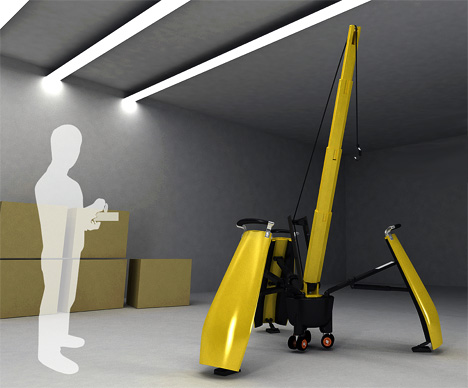
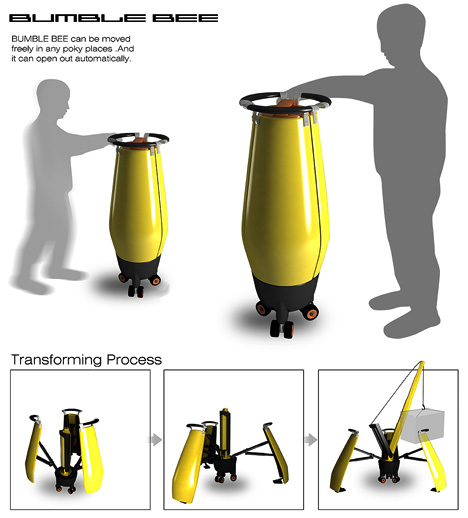
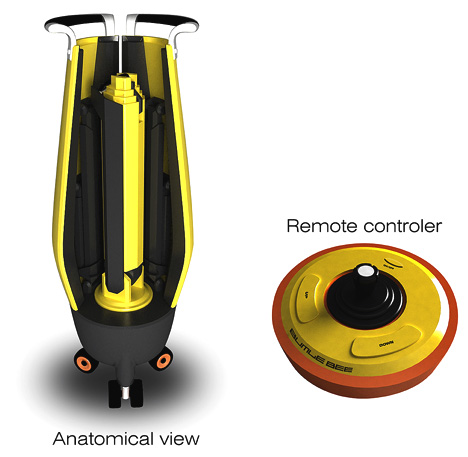
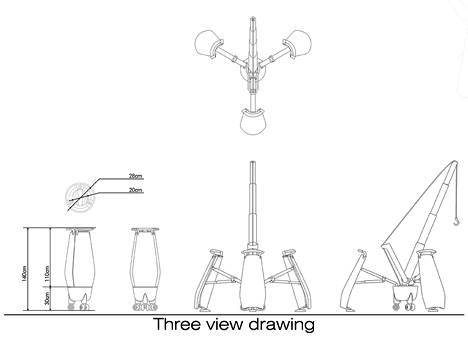













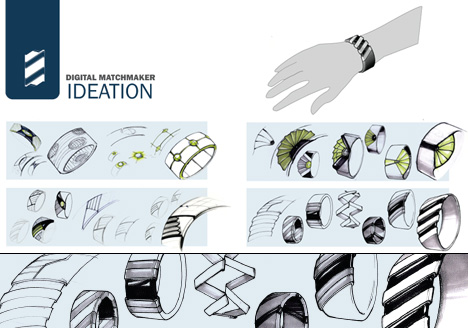
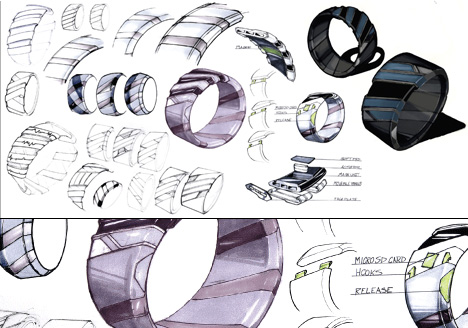

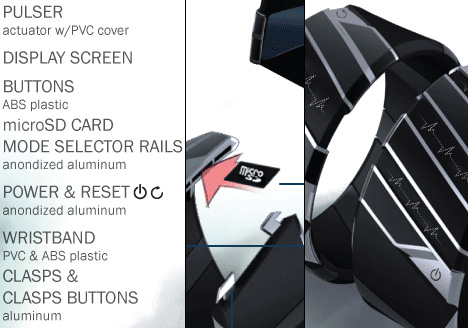
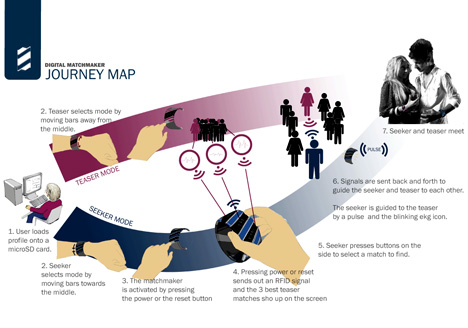
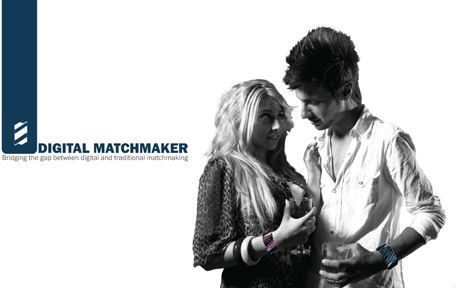
No comments:
Post a Comment